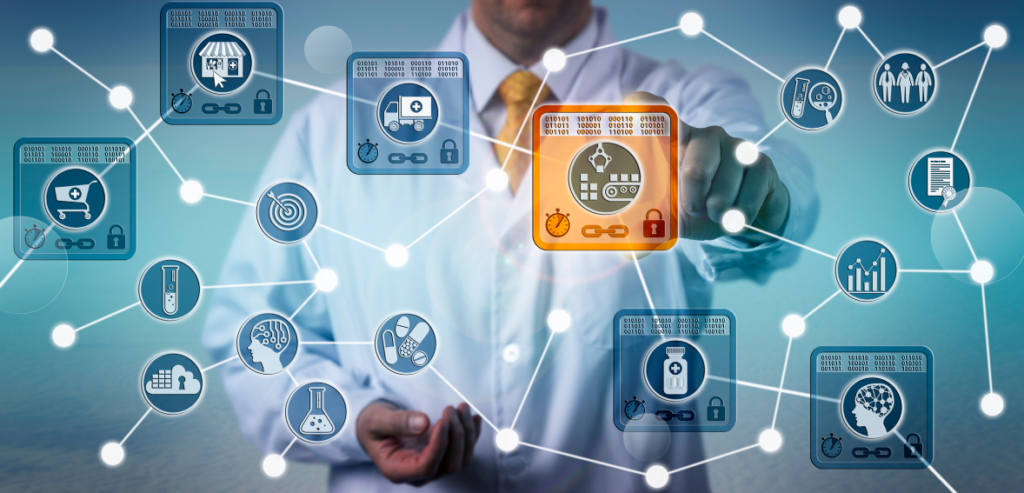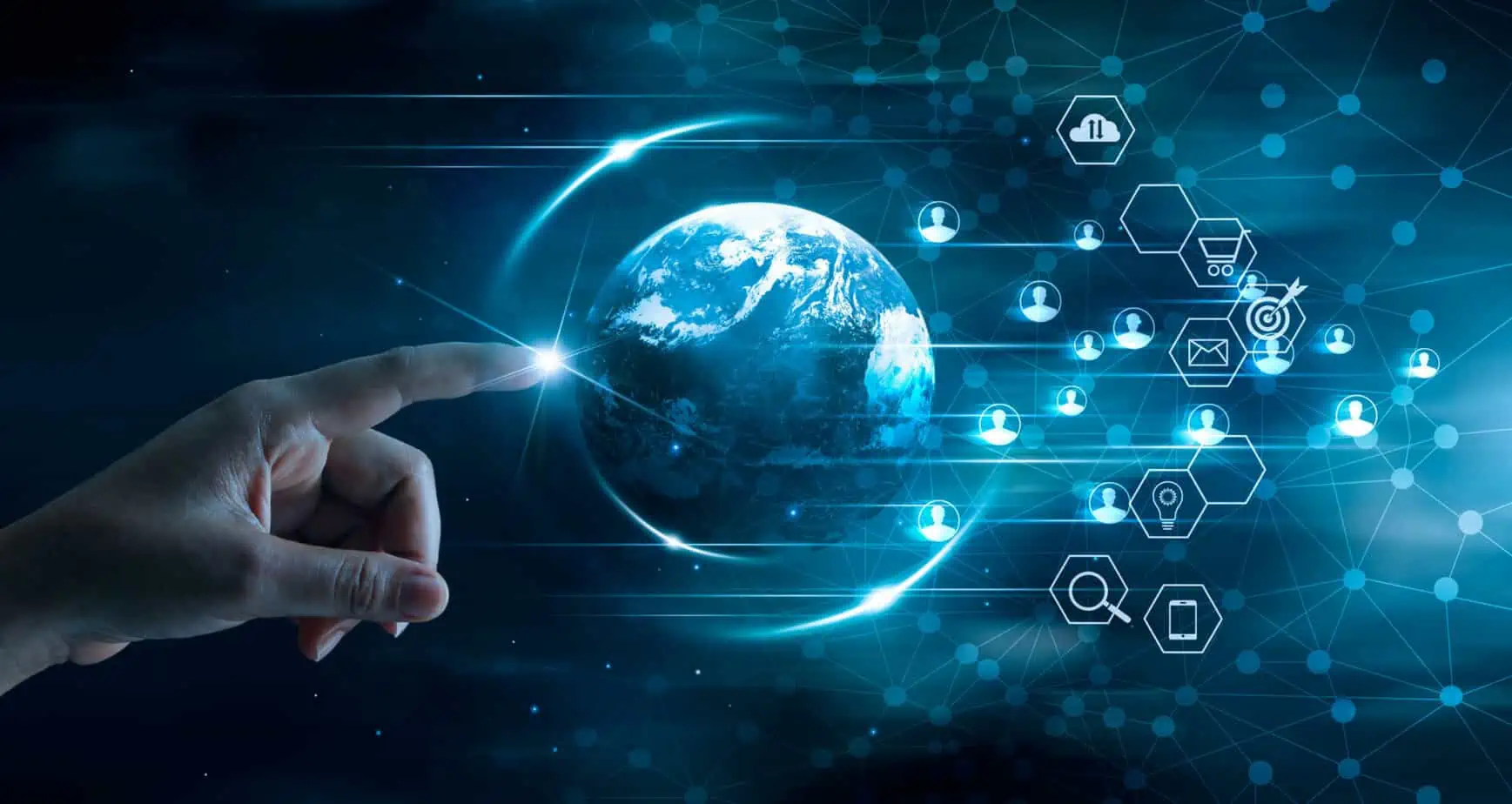For the past 15 years, there have been two major drivers of significant change within the technology space, namely cloud and cloud payments. Everything that anyone wants to purchase, there’s a cloud-based app for it and a very easy, quick, and cashless way to pay for it. My biggest fear 15 years ago was that the Starbucks down the block may not be open. Today, the company has a cloud-based app, if that is ever down, it causes major concerns for many cafe-goers today.
Marc Andreessen is an entrepreneur and venture capitalist who founded Netscape. He’s an influential thought leader who penned an op-ed in 2011, starting with the line, “Software is eating the world.” Today, software has eaten the world. As a result, the world and almost every company has evolved. Cloud services have impacted numerous industries. The cloud has spawned new businesses and business models and laid waste to those too slow to adapt. For every Netflix, there’s a Blockbuster for every Uber, an owner of an extensive taxi medallions portfolio. Even for segments of the economy that haven’t experienced creative destruction, we’ve had software impact them by speeding up operational capabilities, addressing labor shortages, and helping cut costs.
The only disruption that comes close to the cloud is innovations introduced in how we pay. Many go on for weeks without ever needing to touch cash. There are no hassles of waiting in lines to pay utility bills or the need to pull out a calculator to settle a dinner bill among friends. No more writing checks, swiping a credit card, and signing the receipts. No more having to fiddle with loose change.
Today, everything runs on the cloud and increasingly almost everything feels like it is being paid for digitally. Now we are on the cusp of a merger between these two major technological breakthroughs of the past decade; cloud and payments, aptly becoming Cloud Payments.
What are Cloud-Based Payments?

As you understand cloud computing more and see that it is SaaS (Software as a Service) that is powering so much of what we do today, one may realize that cloud-based payments are the natural progression to the FinTech lifecycle. And it is. The payments industry has always transformed, going back to the late 1940s with the introduction of the first credit card.
Cloud-based payments are the digital payment process via an app or software agnostic of physical point-of-sale terminals. Just as there are tremendous opportunities in the cloud payments space, there are challenges.
Cloud payments are also at the forefront of the next wave of innovation, decentralized finance. As the chorus and hype around blockchain and cryptocurrencies grow, the volatility and irrational exuberance will make way for changes in how transactions are recorded automatically, greatly reducing time and money spent on back-office operations for record-keeping.
What is the Cloud? What is Cloud Computing?

Regarding technology, the cloud has been its epitome for nearly 25 years. Cloud has commanded IT departments’ attention and budgets for over two decades. In a word, the cloud is ‘decentralized.’ Anyone, anywhere, has access to all the data they need whenever they need it. In a nutshell, that is what the cloud accomplishes. But what is the cloud? What is Cloud Computing?
According to the National Institute of Standards and Technology, the cloud comprises five key characteristics, four deployment models, and three service models.
The five key characteristics are:
- Self-Service on-demand deployment: The cloud is available to customers whenever and wherever they need it without any human interaction between the user and the service provider. The cloud has to be available for all users, with autonomous capabilities to upsize and downsize resource procurement based on their needs.
- Accessible via a broad network – This means that the cloud must be accessible to a variety of customers in a variety of ways, not just via the internet. Since the cloud also includes a ‘private cloud,’ the cloud must be accessible via a LAN, or a local area network.
- Pooling of resources – The cloud must implement a multi-tenant model where all resources are shared while ensuring both privacy and security. Think of this cloud characteristic as an office building. An office building allows for multiple tenants to occupy the same space and allow all to utilize shared resources, while also providing specific private and secure space for individual tenants.
- Ability to scale – This characteristic allows cloud customers to quickly adjust cloud resources utilized based on their needs.
- Measured Usage – As cloud resources are metered and customers can scale usage as needed, they still need to be able to measure their cloud resource utilization. This can allow them to monitor their expense and further optimize it.
The four deployment models include:
- Public cloud – this is a cloud infrastructure offered to businesses or consumers by cloud service providers. Examples of the public cloud include Microsoft’s Azure, Amazon.com Inc’s Amazon Web Services (AWS), Google Cloud Platform, and Salesforce.
- Community Cloud – a cloud infrastructure as shared resources by certain users or organizations, centered around specific use cases or ‘communities.’
- Private cloud – this type of cloud is intended for a specific user or company and is managed by the company itself or a third-party service provider. The cloud infrastructure can be on-site or off-site.
- Hybrid cloud – this cloud model is a combination of any of the other three models: public, community, and private cloud. Often the purpose of a hybrid cloud is to have data both in physical data centers on-premises (private cloud) and offsite cloud infrastructure (public cloud). This is often done to segregate numerous vendors for resiliency purposes.
The three service models consist of:
- PaaS – Platform as a Service is an all-encompassing service offering to carry out many different IT operations such as Dev-Ops, implementing cloud frameworks and middleware deployments, and incorporating various services such as DMS and BI on the platform.
- SaaS – Software as a solution, the largest of the three service models. SaaS is an entire repertoire of applications available for businesses or individuals. Users can log in via a website and run the app on the web-based infrastructure of the cloud service provider
- IaaS – Infrastructure as a Solution lets businesses rent out any infrastructure tech stack required from a vendor. Web-based login grants access to containers, virtual machines, and storage management, among a host of other functionality.
Although the cloud probably traces its roots to the internet and ARPANET from the 1960s, the concept took practical shape in ’99 when an Oracle executive had the great idea of Software as a Service, or SaaS. He founded a company called Salesforce and it introduced the world to having internet-based software that required no downloads, no installations, no updates – effectively, no hassle. Clients simply logged into the software via a browser and used it as needed.
Within a few years, another major tech company looked for ways to set up sufficient data storage which they could adjust based on users’ needs to control costs and run all their applications, platforms, and infrastructure on these storage servers and access it via the internet and a browser. The initiative was so successful, that the company decided to roll it out as a business service, called Amazon Web Services, or AWS. Although it is a unit of Amazon.com, Inc, many analysts assess the AWS business line to be valued at $1 trillion.
Cloud-Based Payments Solutions in SaaS Environments
Considering everything we understand about the cloud, one can easily see how various payment options can be combined into a single SaaS environment. To clarify, Cloud Payments isn’t simply a mobile wallet you can pay with. It isn’t just an in-app solution, so customers don’t have to exit a single user experience. It isn’t solely a payments gateway or a mechanism to process ACH real-time payments. It doesn’t just give merchants the ability to set up a virtual terminal or cloud-based POS that seamlessly interacts with physical point of sale terminals. It is all these features combined into one.
That is the essence of Cloud Payments. Businesses, and society at large, are all shifting their habits and usage towards a single device, their smartphone, powered by the cloud. As these trends percolate, below are specific benefits of Cloud Payments solutions that merchant should be aware of and be ready to take advantage of.
User Experience – Consumers having to face too many steps to finally get to pay for a product is likely to nudge customers away. The biggest benefit of Cloud payments in a SaaS environment is a seamless process to process payments in any form the consumers wish to pay with as few steps and clicks as possible.
Merchants’ proficiency should be to offer their customers the ability to pay via their digital wallet, ACH, a debit, or credit card whether physically or via a token. All challenges merchants face in accomplishing this can easily be overcome using Cloud Payments solutions in a SaaS environment.
- Reporting, Analytics and Insight – Merchants also require a real-time bird-eye dashboard view of their customers; who’s buying what, how they’re paying, what they’re subscribing to, how loyal a customer they’ve been, their spending history, personal demographic and a host of other analytics. Cloud Payments solutions in a SaaS environment offer all these added layers of insight about customers that can easily be baked into strategic plans for future product development or marketing campaigns.
- Security – Finally, businesses must safeguard all these various forms of personal and financial consumer data. Encryption is already available from existing payments processing platforms. However, it is the added benefit of Cloud Payments via SaaS that eliminates the hassle of safeguarding data. Security and privacy are the mainstays of SaaS environments where compliance mechanisms are built into the infrastructure, and automated security patches and updates are applied as they are due or become available.
- Finally, SaaS companies need to safeguard the consumer data they gather in processing payments. One prime example of such enhanced safeguards is tokenization. This is a highly secure method of protecting customer data used for payment processing. Tokenization will take all the vital personal data needed for payment processing and replace that with a string of numbers that only the tokenization master key can decipher.
- The past couple of decades has been transformational for both individuals and businesses alike. Technological advances have allowed for ease of starting up businesses, keeping them operating, and seamlessly raising financing for them. The same is true for consumers. Payments can be made by simply swiping a phone next to another machine. All your data and the day-to-day needs – accessing an airline ticket, a bank account, paying bills, shopping, ordering food, listening to music, playing games, watching movies, learning, working, exercising – it all get addressed immediately via a single device that stores all that data on the cloud.
Many would point to the smartphone as a technological marvel. However, the real marvel is the cloud that powers and houses the apps on the smartphone that let everyone do all these things. As a result, spending on the cloud is projected to be over $500 billion this year.
The ease of doing business on the cloud has birthed numerous industries or reshaped them in such as way that one can say it’s an entirely new business section. One such industry is payments. The speed and manner in which payments are made today are night and day compared to just 15 years ago. Society is moving closer and closer to being cashless and every year seems like an accelerant compared to the prior. As payments converge to the cloud, it is important for merchants to keep a close eye on the quickly changing dynamics.
Today, everything runs on the cloud and increasingly almost everything feels like it is being paid for digitally as well. Now we are on the cusp of a merger between these two major technological breakthroughs or the very recent past; cloud and payments – Cloud Payments.

